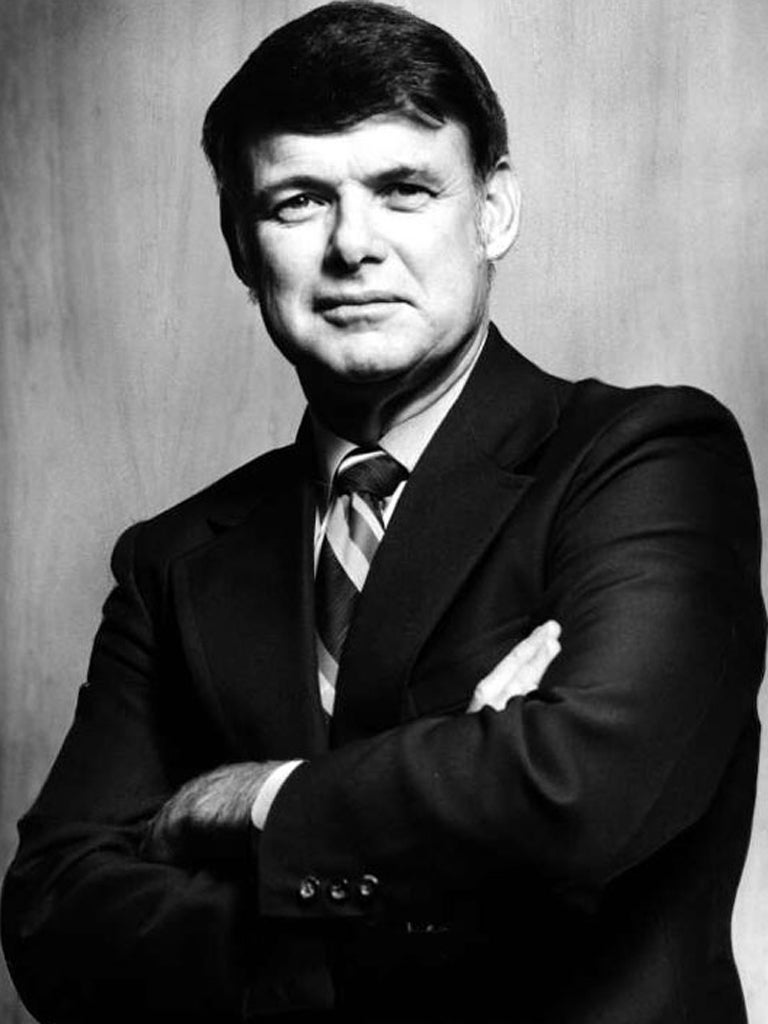Bruce Murray: Nasa director who pioneered photography in space science

Your support helps us to tell the story
From reproductive rights to climate change to Big Tech, The Independent is on the ground when the story is developing. Whether it's investigating the financials of Elon Musk's pro-Trump PAC or producing our latest documentary, 'The A Word', which shines a light on the American women fighting for reproductive rights, we know how important it is to parse out the facts from the messaging.
At such a critical moment in US history, we need reporters on the ground. Your donation allows us to keep sending journalists to speak to both sides of the story.
The Independent is trusted by Americans across the entire political spectrum. And unlike many other quality news outlets, we choose not to lock Americans out of our reporting and analysis with paywalls. We believe quality journalism should be available to everyone, paid for by those who can afford it.
Your support makes all the difference.Bruce Murray was an ambitious proponent of space exploration and was among the first to emphasise the use of photography of other planets. Murray was director of the Jet Propulsion Laboratory, a space exploration arm of Nasa, from 1976-82. As a part of the team that launched the Mariner missions to Mars and other planets in the 1960s and 1970s, Murray was one of the first scientists to highlight the use of photography in space science.
He began working for the laboratory in 1960 while serving as a geology professor at the California Institute of Technology, which manages the JPL, based in Pasadena. Mariner 4 transmitted pictures of the terrain of Mars back to Earth in 1965, the first time images of the surface of another planet had been seen. Murray used the images to develop a geological history of Mars. In the early 1970s, he was the lead scientist of the Mariner 10 mission, which photographed Venus and Mercury.
Expectations were high when Murray took over at the Jet Propulsion Laboratory in 1976. That year, two Viking missions reached Mars, despatching automated roving vehicles to the surface. Murray had misgivings about the Viking projects, suggesting that they were launched before scientists had a reliable understanding of the Martian atmosphere and surface.
But, to Murray's disappointment, the era of interplanetary space exploration was already at its zenith. He said there were two kinds of missions — purple pigeons and grey mice — that the JPL could pursue. He favoured "purple pigeons," or projects that captured the public imagination, such as a rendezvous with a comet. "Grey mice" missions were less dramatic. But Murray's hopes were thwarted by budgetary battles with Congress and changing priorities.
The space shuttle programme claimed a higher profile at Nasa, as public support for the unmanned exploration of outer space began to wane. In the early 1980s, the funding emphasis at the space laboratory began to shift from pure science to something that began to resemble an adjunct of military preparedness. Murray said he was not opposed to the change – "Quite the opposite; I was the architect of the shift," he said in 1982 – but he noted that other scientists were not as comfortable working on programmes with military applications. When he resigned from JPL in 1982, he was replaced by a retired Air Force general. He returned to Caltech, where he taught until 2002. He also worked on joint US space ventures with the Soviet Union, Japan and China.
In 1979 Murray and Carl Sagan founded the Planetary Society, which seeks to raise awareness of space science. Murray wrote several books, including Journey Into Space: The First Thirty Years of Space Exploration (1989).
Bruce Churchill Murray, scientist: born New York 30 November 1931 ; married firstly Joan O'Brien (marriage dissolved; three children), secondly Suzanne Moss (two children); died Oceanside, California 29 August 2013.
Join our commenting forum
Join thought-provoking conversations, follow other Independent readers and see their replies
Comments